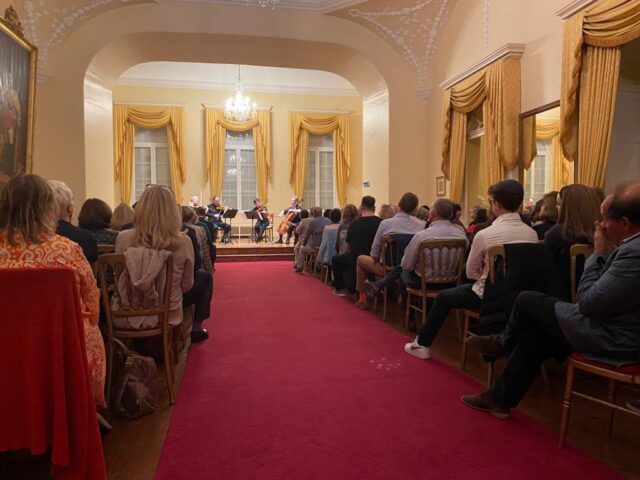New Riga Strings open chamber to four centuries
Review by C.Wall
Though lineups may have changed, the New Riga String Quartet looked very much at home in their fourth Convent recital of the last fourteen years.
Mozart’s “Spring” Quartet K387 opened with a breezy gentleness, the Allegro maintaining a fresh, open sound, with just a little layering. The long Menuetto that followed was more dancelike, circling around dynamics changes, subduing the darkness with a dogged progression while the opening to the Andante was stately without feeling too restrained, and the rest of the movement was full of warm expression, dramatic stops, silky passages from Dace Zalite-Zilberte’s cello, and an end that cried for resolution.

The last movement started from a mournful place and was played with coordinated fluidity, though I would have preferred something more volatile.
“Four Bagatelles” from Imants Zemzaris, was commissioned in 2014 by a Latvian foundation and presents contemporary music both challenging and sympathetic to a conservative audience.
Bagatelles are short and light musical pieces, typically for piano, while a bagatelle is also a game that involves getting past wooden pegs, and both senses were apparent in the Zemzaris composition.

The first bagatelle, the most abstract, was full of serial pizzicato exchanges, etching out irregular harmonies.
The second opened lyrically and was full of notes that were sustained to haunting effect while the third opened expansively and diminished piteously, and was followed by a series of variations tracing the same journey.
The fourth was more conventional, with another expansive opening, a striking cello pizzicato, lovely violin solos, and lively duets. It fed interesting discussions at the interval.
What followed was a folksy rendition of Dvorak Op. 96, his “American” String Quartet.
Violinists Sandis Steinbergs and Darja Smirnova swapped places, allowing the latter to add a swinging amplification to her expansive playing, while Steinbergs rolled up the sweetness and Peteris Trasuns moved his viola with the apparent abandon of a country fiddler.
The joyful Allegro was followed by a Lento that normally suggests American spirituality, but here added the calm of patient resignation, anchored by a soulful cello.
The thrilling third movement switched seamlessly from rustic birdsong to classical order, while the fourth maintained a heady rhythm, interspersed with a gentle lyricism, and ended too abruptly.
The twentieth century was thus represented, as in previous New Riga recitals, with the beloved encore tango “Por una Cabeza”, a familiar close to an evening of refreshing vitality for the Philharmonic Society.









